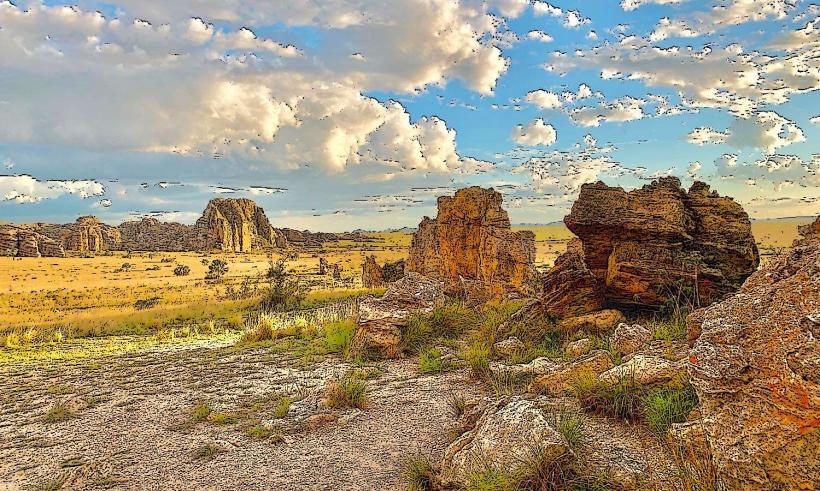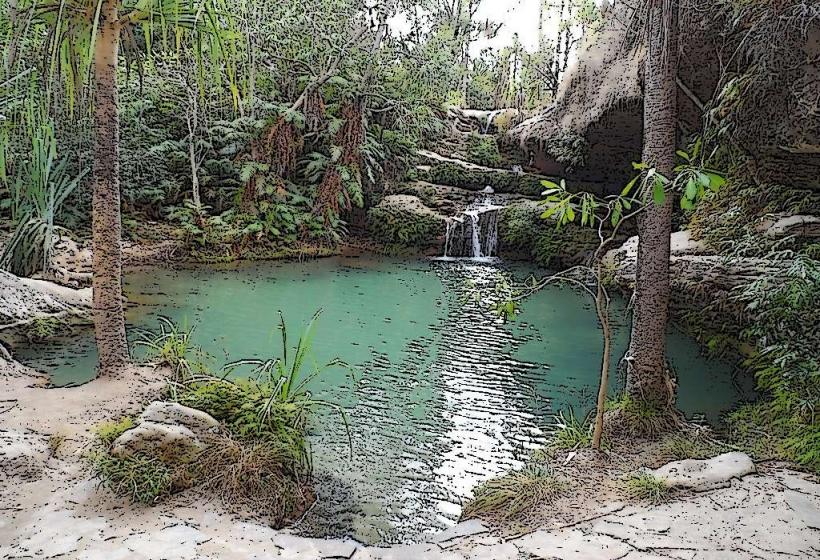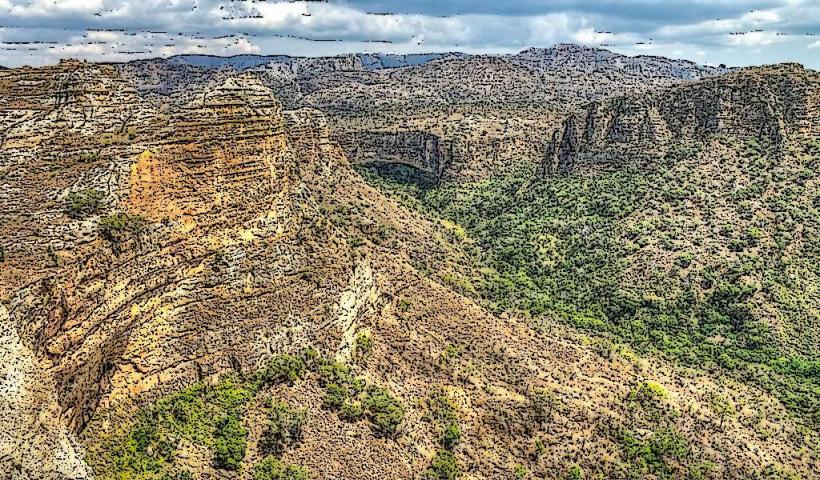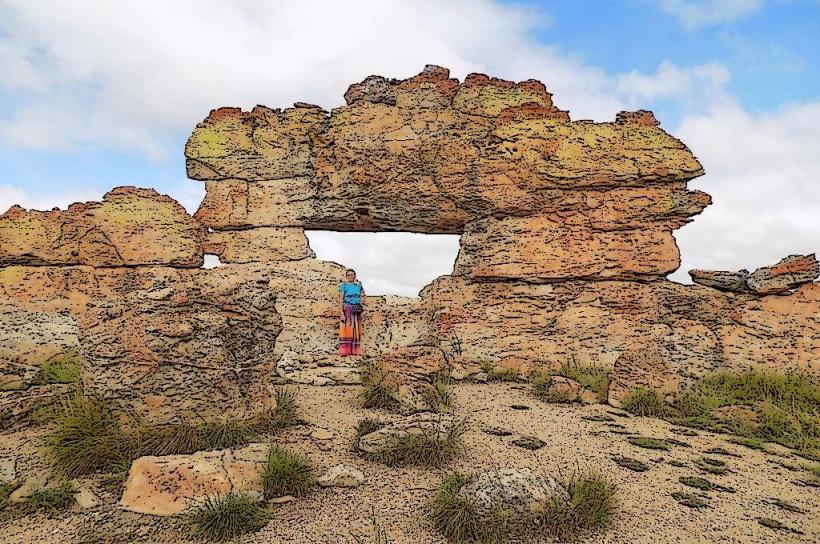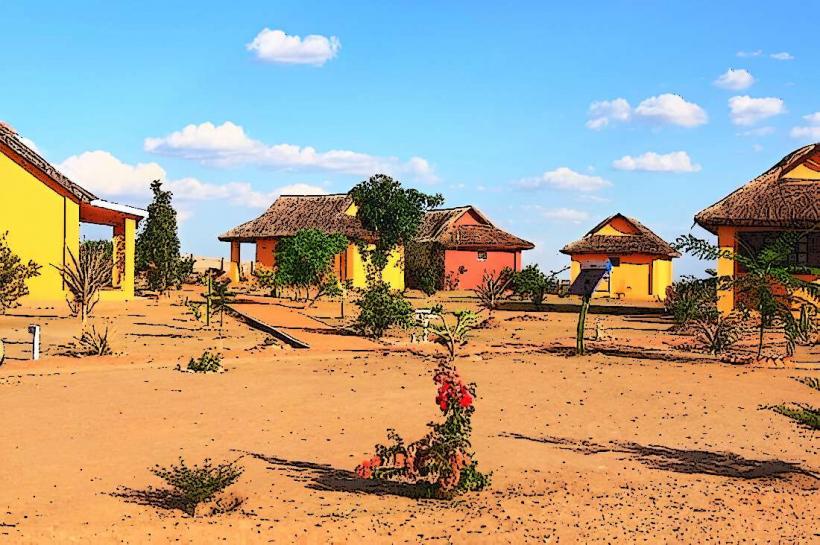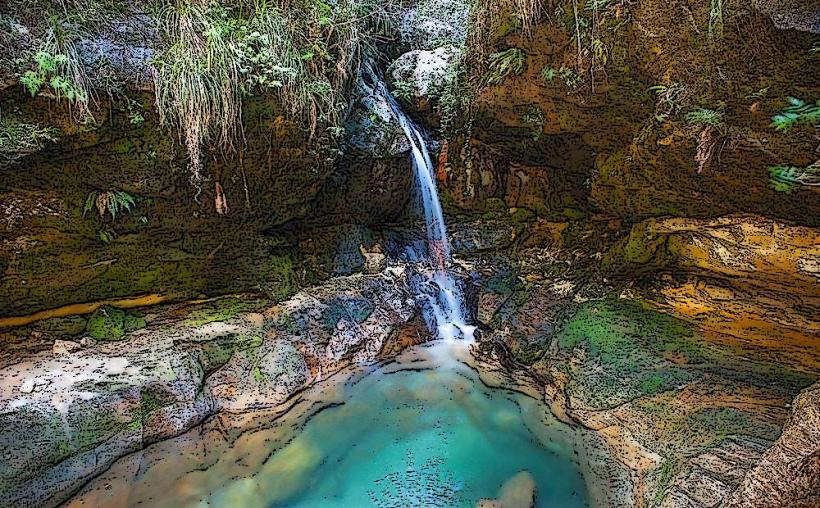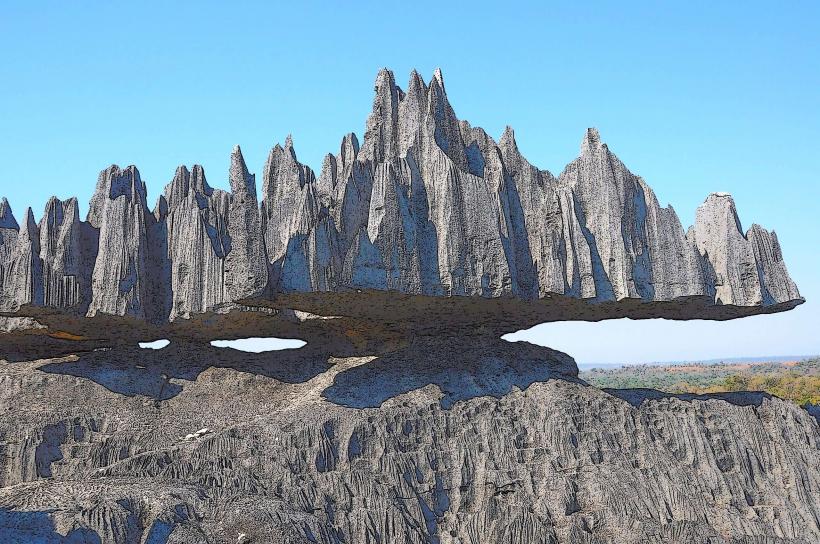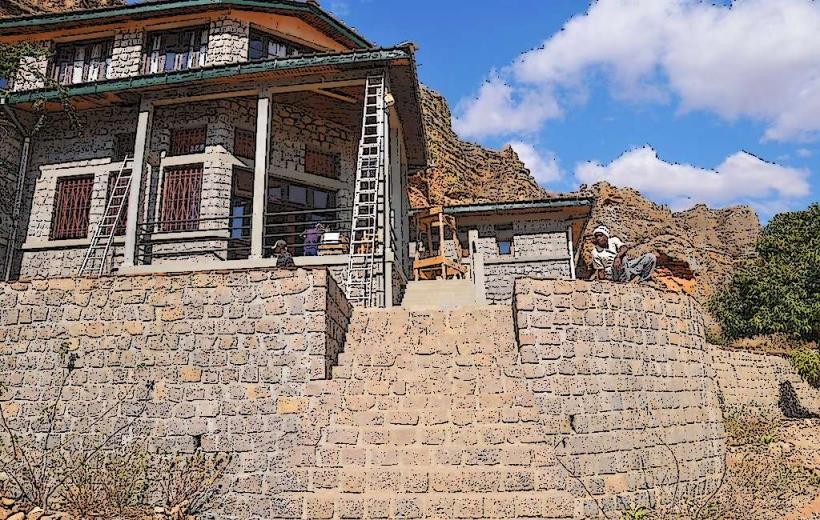Information
Landmark: Sacred Pools of IsaloCity: Isalo
Country: Madagascar
Continent: Africa
The Sacred Pools of Isalo are a significant cultural and natural site located within Isalo National Park, Madagascar. These pools, which are nestled within the park's stunning sandstone formations, hold deep spiritual importance for the Bara people, the indigenous community of the region. Apart from their cultural significance, the Sacred Pools are a beautiful and serene spot in the park, offering visitors a unique blend of natural beauty and cultural heritage.
Key Features of the Sacred Pools of Isalo:
Location and Setting:
- The Sacred Pools are situated within Isalo National Park, specifically in a valley surrounded by dramatic sandstone cliffs. The pools are fed by streams that flow from the surrounding landscape, creating a lush contrast to the otherwise dry and rocky terrain of the park.
- The pools are located near the Canyon of Isalo, and they are often visited by tourists on guided treks that explore the park's diverse natural features.
Cultural Significance:
- For the Bara people, the Sacred Pools hold spiritual and cultural importance. The Bara believe that the pools are inhabited by ancestral spirits, and as such, they treat the area with great reverence.
- The pools are often used for rituals and ceremonial purposes by the local community. It is believed that the spirits residing in the pools can offer protection and blessings. As part of their beliefs, the Bara have strict taboos around the pools, and visitors are advised to show respect for the cultural customs associated with the site.
- The area around the Sacred Pools is often seen as a sacred burial site, with nearby caves and rock formations serving as tombs for ancestors.
The Pools:
- The Sacred Pools themselves are small, tranquil bodies of water that are crystal-clear and surrounded by lush vegetation. These pools are often shaded by trees and rocks, providing a peaceful and cool respite from the harsh sun.
- Unlike the Piscine Naturelle (Natural Pool), which is primarily used for swimming, the Sacred Pools are considered a sacred site, and visitors are typically discouraged from swimming in them. This is in line with local customs and the spiritual significance of the pools.
- The pools are also home to various plant species, which thrive in the moist, sheltered environment around the water.
Tourism and Activities:
- Trekking: The Sacred Pools can be accessed via one of the hiking trails within Isalo National Park. The trek to the pools offers stunning views of the surrounding sandstone formations, canyons, and vegetation.
- Cultural Insight: Visiting the Sacred Pools provides an opportunity to learn about the Bara people's culture, beliefs, and connection to the land. Local guides often share stories and insights about the significance of the pools, as well as the traditions associated with the site.
- Photography: The Sacred Pools offer a picturesque setting, with the serene water, surrounding cliffs, and lush greenery creating a striking contrast against the arid landscape of Isalo. Photographers often visit to capture the beauty of the pools and the dramatic landscapes.
Access and Best Time to Visit:
- The Sacred Pools are part of the Isalo National Park, and visitors typically explore them as part of a guided trek within the park. The pools can be reached from Isalo Village (Ranohira), which is the main gateway to the park.
- The best time to visit the Sacred Pools is during the dry season, which runs from April to October. During this time, the weather is cooler and the hiking trails are easier to navigate. The wet season (November to March) can make the trails slippery and more difficult to traverse.
Environmental and Wildlife Significance:
- The area surrounding the Sacred Pools is a lush oasis in the otherwise dry and rocky environment of Isalo. The pools and their surroundings support a variety of plant and animal species, including lemurs, chameleons, and various bird species.
- The contrast between the dry, arid landscape and the lush vegetation around the pools provides a unique microenvironment, making the Sacred Pools an important ecological feature in the park.
Respect for Local Beliefs:
- As with many sacred sites in Madagascar, visitors are encouraged to show respect for local customs when visiting the Sacred Pools. This may include refraining from disturbing the area, not swimming in the pools, and following the guidance of local tour guides.
- In some cases, visitors may be asked to make a small offering or prayer as a sign of respect for the spirits associated with the pools.
Conclusion:
The Sacred Pools of Isalo are a beautiful and culturally significant feature of Isalo National Park. With their serene waters, surrounded by dramatic sandstone cliffs and lush vegetation, the pools offer both natural beauty and insight into the deep spiritual connection between the Bara people and the land. For visitors, the Sacred Pools are an opportunity to experience Madagascar's unique cultural heritage and stunning landscapes while respecting the traditions of the local community.

